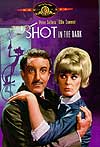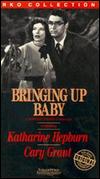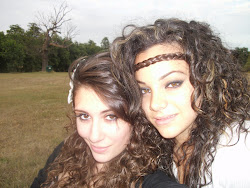Comedy Films are "make 'em laugh" films designed to elicit laughter from the audience. Comedies are light-hearted dramas, crafted to amuse, entertain, and provoke enjoyment. The comedy genre humorously exaggerates the situation, the language, action, and characters. Comedies observe the deficiencies, foibles, and frustrations of life, providing merriment and a momentary escape from day-to-day life. They usually have happy endings, although the humor may have a serious or pessimistic side.
Types of comedies:
Comedies usually come in two general formats: comedian-led (with well-timed gags, jokes, or sketches) and situation-comedies that are told within a narrative. Both comedy elements may appear together and/or overlap. Comedy hybrids commonly exist with other major genres, such as musical-comedy, horror-comedy, and comedy-thriller. Comedies have also been classified in various subgenres, such as romantic comedy, crime/caper comedy, sports comedy, teen or coming-of-age comedy, social-class comedy, military comedy, fish-out-of-water comedy, and gross-out comedy. There are also many different kinds, types, or forms of comedy, including:
Slapstick
Slapstick was predominant in the earliest silent films, since they didn't need sound to be effective, and they were popular with non-English speaking audiences in metropolitan areas. The term slapstick was taken from the wooden sticks that clowns slapped together to promote audience applause.
This is primitive and universal comedy with broad, aggressive, physical, and visual action, including harmless or painless cruelty and violence, horseplay, and often vulgar sight gags (e.g., a custard pie in the face, collapsing houses, a fall in the ocean, a loss of trousers or skirts, runaway crashing cars, people chases, etc). Slapstick often required exquisite timing and well-honed performance skills. It was typical of the films of Laurel and Hardy, Abbott and Costello, W. C. Fields, The Three Stooges, the stunts of Harold Lloyd in Safety Last (1923), and Mack Sennett's silent era shorts (for example, the Keystone Kops). Slapstick evolved and was reborn in the screwball comedies of the 1930s and 1940s.
 More recent feature film examples include the comedic mad chase for treasure film by many top comedy stars in Stanley Kramer's It's a Mad, Mad, Mad, Mad World (1963), and French actor/director Jacques Tati's mostly dialogue-free Mr. Hulot's Holiday (1953, Fr.), and Jim Carrey in Ace Ventura, Pet Detective (1993) and The Mask (1994).
More recent feature film examples include the comedic mad chase for treasure film by many top comedy stars in Stanley Kramer's It's a Mad, Mad, Mad, Mad World (1963), and French actor/director Jacques Tati's mostly dialogue-free Mr. Hulot's Holiday (1953, Fr.), and Jim Carrey in Ace Ventura, Pet Detective (1993) and The Mask (1994).
 More recent feature film examples include the comedic mad chase for treasure film by many top comedy stars in Stanley Kramer's It's a Mad, Mad, Mad, Mad World (1963), and French actor/director Jacques Tati's mostly dialogue-free Mr. Hulot's Holiday (1953, Fr.), and Jim Carrey in Ace Ventura, Pet Detective (1993) and The Mask (1994).
More recent feature film examples include the comedic mad chase for treasure film by many top comedy stars in Stanley Kramer's It's a Mad, Mad, Mad, Mad World (1963), and French actor/director Jacques Tati's mostly dialogue-free Mr. Hulot's Holiday (1953, Fr.), and Jim Carrey in Ace Ventura, Pet Detective (1993) and The Mask (1994).This form of comedy was best exemplified by the expression-less face of stoic comic hero Buster Keaton.
Verbal comedyThis was classically typified by the cruel verbal wit of W. C. Fields, the sexual innuendo of Mae West, or the verbal absurdity of dialogues in the Marx Brothers films, or later by the self-effacing, thoughtful humor of Woody Allen's literate comedies.
Screwball
Screwball comedies, a sub-genre of romantic comedy films, was predominant from the mid-1930s to the mid-1940s. The word 'screwball' denotes lunacy, craziness, eccentricity, ridiculousness, and erratic behavior.
 These films combine farce, slapstick, and the witty dialogue of more sophisticated films. In general, they are light-hearted, frothy, often sophisticated, romantic stories, commonly focusing on a battle of the sexes in which both co-protagonists try to outwit or outmaneuver each other. They usually include visual gags (with some slapstick), wacky characters, identity reversals (or cross-dressing), a fast-paced improbable plot, and rapid-fire, wise-cracking dialogue and one-liners reflecting sexual tensions and conflicts in the blossoming of a relationship (or the patching up of a marriage) for an attractive couple with on-going, antagonistic differences (such as in The Awful Truth (1937)). Some of the stars often present in screwball comedies included Katharine Hepburn, Barbara Stanwyck, Claudette Colbert, Jean Arthur, Irene Dunne, Myrna Loy, Ginger Rogers, Cary Grant, William Powell, and Carole Lombard.
These films combine farce, slapstick, and the witty dialogue of more sophisticated films. In general, they are light-hearted, frothy, often sophisticated, romantic stories, commonly focusing on a battle of the sexes in which both co-protagonists try to outwit or outmaneuver each other. They usually include visual gags (with some slapstick), wacky characters, identity reversals (or cross-dressing), a fast-paced improbable plot, and rapid-fire, wise-cracking dialogue and one-liners reflecting sexual tensions and conflicts in the blossoming of a relationship (or the patching up of a marriage) for an attractive couple with on-going, antagonistic differences (such as in The Awful Truth (1937)). Some of the stars often present in screwball comedies included Katharine Hepburn, Barbara Stanwyck, Claudette Colbert, Jean Arthur, Irene Dunne, Myrna Loy, Ginger Rogers, Cary Grant, William Powell, and Carole Lombard.The couple is often a fairly eccentric, but well-to-do female interested in romance and a generally passive, emasculated, or weak male who resists romance, such as in Bringing Up Baby (1938), or a sexually-frustrated, humiliated male who is thwarted in romance, as in Howard Hawks' farce I Was a Male War Bride (1949). The zany but glamorous characters often have contradictory desires for individual identity and for union in a romance under the most unorthodox, insane or implausible circumstances (such as in Preston Sturges' classic screwball comedy and battle of the sexes The Lady Eve (1941)). However, after a twisting and turning plot, romantic love usually triumphs in the end. (See more discussion later in this section.)
These are dark, sarcastic, humorous, or sardonic stories that help us examine otherwise ignored darker serious, pessimistic subjects such as war, death, or illness. Two of the greatest black comedies ever made include the following: Stanley Kubrick's Cold War classic satire from a script by co-writer Terry Southern, Dr. Strangelove or: How I Learned to Stop Worrying and Love the Bomb (1964) that spoofed the insanity of political and military institutions with Peter Sellers in a triple role (as a Nazi scientist, a British major, and the US President), and Robert Altman's M*A*S*H (1970), an irreverent, anti-war black comedy set during the Korean War. Another more recent classic black comedy was the Coen Brothers' violent and quirky story Fargo (1996) about a pregnant Midwestern police chief (Oscar-winning Frances McDormand) who solves a 'perfect crime' that went seriously wrong.
Hal Ashby's eccentric cult film Harold and Maude (1972) was an oddball love story and dark comedy about a suicidal 19 year-old (Bud Cort) and a quirky, widowed octogenarian.
John Huston's satirical black comedy Prizzi's Honor (1985) starred Jack Nicholson as dimwitted Mafia hit man Charley Partanna for the East Coast Prizzi family, who fell in love with West Coaster Irene Walker (Kathleen Turner) - another mob's hitwoman.
Tim Burton's dark and imaginative haunted house comedy Beetle juice (1988) featured Michael Keaton as the title character in a dream house occupied by newlywed spirits Geena Davis and Alec Baldwin.
The shocking but watchable first film of Peter Berg, Very Bad Things (1998) told the dark and humorous story of a 'bachelor' weekend in Las Vegas gone bad for five guys when their hired stripper/prostitute was accidentally killed.
Spoof These specific types of comedy (also called put-ons, send-ups, charades, lampoons, take-offs, jests, mockumentaries, etc.) are usually a humorous or anarchic take-off that ridicules, impersonates, punctures, scoffs at, and/or imitates (mimics) the style, conventions, formulas, characters (by caricature), or motifs of a serious work, film, performer, or genre.
Parody/
Black or Dark Comedy
No comments:
Post a Comment